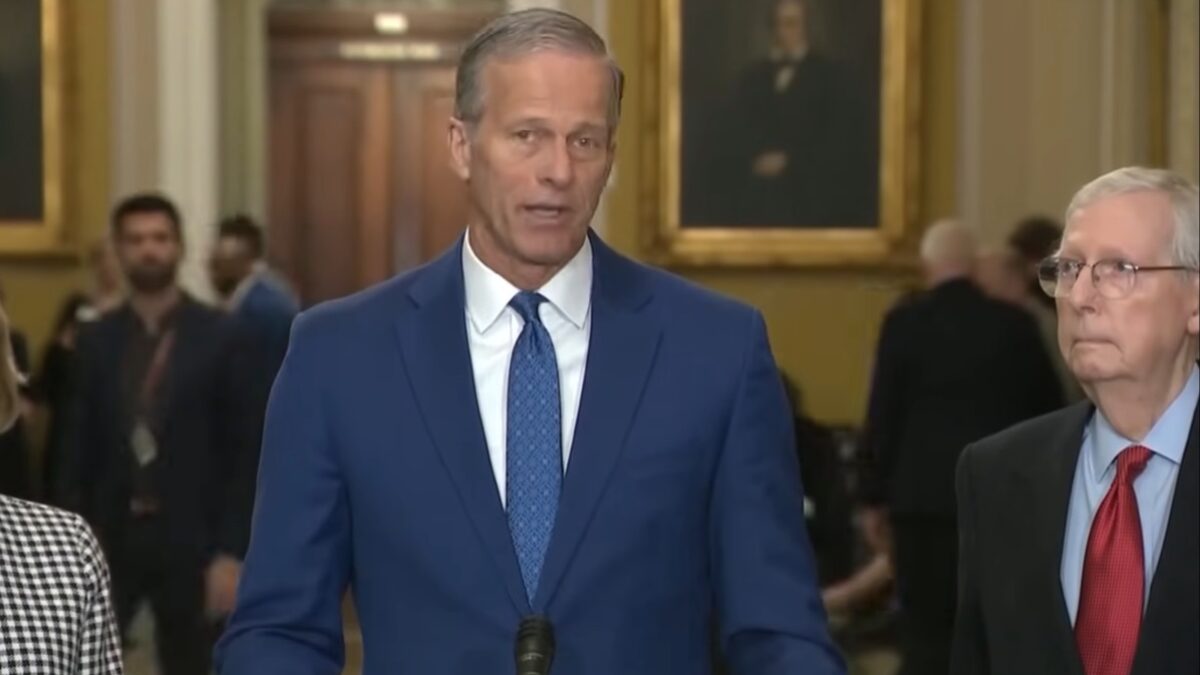
Just when it seemed the war between traditional, nonprofit universities and for-profit universities had ended in a decisive victory for the former, public and private nonprofit universities face a new threat from for-profit colleges. As online education becomes the new norm in higher education, the two sectors are converging.
Recognizing the benefits of online education to attract new, nontraditional students, traditional colleges have increasingly begun to embrace online education. At the same time, for-profits—recognizing the regulatory shelter that nonprofits have long enjoyed—have begun to spin off the for-profit sides of their enterprises to convert to nonprofit status.
Given the very nature of for-profit education to be disruptive, agile, and Darwinian, this is unsurprising. Regional accreditors and federal regulators have scrutinized for-profits much more deeply than they ever have most public and private nonprofit universities. But this is about to change, and not because regulators have a newfound concern for students at public and private nonprofit universities. Rather, it is because for-profit institutions are petitioning to become nonprofits, and they could bring their burdensome regulatory baggage with them.
We Want a Piece of the Prize Pie
In March, the Higher Learning Commission (HLC) approved for-profit Grand Canyon University’s (GCU) bid to become a nonprofit entity. While the change still must be approved by the Arizona Board for Private Postsecondary Education, the U.S. Department of Education (USDOE), and the Internal Revenue Service, earning approval from their regional accreditor is arguably the most important first step toward their transformation.
This is a surprising development, considering that in 2016, the HLC denied Grand Canyon’s request to change their tax status. If successful, they will split into two organizations: one a nonprofit university eligible for federal research grants and tax-free donations, the other a for-profit online program management company providing essential university operations, such as student recruitment, academic counseling, and financial aid processing.
The process began slowly with Herzing University, Remington College, and Everglades College all converting over the last couple of decades. Recently, for-profit provider Education Management Corporation (EDMC) successfully transformed its holdings—South University, Argosy University, The Art Institutes, and Western States College of Law—to nonprofits by selling them to the nonprofit Dream Learning Center Foundation. That transaction was finalized in January.
Bridgepoint Education’s Ashford University has also expressed a desire to convert from for-profit to nonprofit. Grand Canyon and Ashford are the latest universities to view this as a viable strategy to seek shelter in nonprofit status from government regulations imposed on for-profits.
The Game Is All About Getting Taxpayers’ Money
Grand Canyon and Ashford University have a history of changing tax statuses. Both were nonprofits that became for-profits and are seeking to return to their nonprofit roots. In a type of Trojan Horse strategy, start-up for-profits have sometimes bought out struggling liberal arts colleges, as Bridgepoint did with Ashford, to avoid the lengthy and difficult process of becoming regionally accredited in their own right.
Universities cannot process Title IV federal funding (federal student loans and Pell grants) without some form of accreditation approved by the Department of Education. In the absence of Title IV subsidies, most universities would come to an abrupt end. Bridgepoint’s acquisition of Ashford bought their regional accreditation and Ashford’s board of trustees saved the institution from insolvency and closure. The board’s actions were not without controversy.
Robert Shireman, a fellow at the Century Foundation and former USDOE employee, has warned in a variety of publications over a number of years that for-profit to nonprofit conversions should be viewed with a healthy dose of skepticism, if not prohibited. Newly formed nonprofit boards may face ethical dilemmas as their dependence on revenue generated from the online program management companies moves them away from mission-driven decisions and toward financially motivated ones.
The more strident critics of for-profit universities have long argued that profit-seeking is incompatible with higher education because the profit motive eventually overtakes sound educational decision-making. This argument will become increasingly difficult to sustain after for-profits separate their business and academic operations.
These newly converted nonprofit institutions will be eligible to receive federal research grants, build tax-exempt endowments, and engage in academic endeavors just like others in the academy. However, they will be partnered with online program management companies that are not only profit-seeking, but will be profit-generating. These management companies will likely continue the same business practices that drew so much unwanted attention, but now, the colleges will be able to avoid the enhanced regulations placed upon for-profits.
Updated Regulations Put Traditional U In the Crosshairs
Given the pace and scope of these conversions, accreditors and regulators will eventually adapt their rules and methods to evaluate how online program management companies interact with and influence their newly formed nonprofit patrons. Former for-profits will argue they should not be subject to additional oversight because they are a private nonprofit university just like thousands of others, and will likely have legal standing for these arguments. Jason Delisle and Preston Cooper, researchers at the American Enterprise Institute, favor equity of oversight for all colleges, arguing that all should be held to the same standards regardless of their tax status.
The crux of the problem, not surprisingly, is oversight. If accreditors and regulators pursue former for-profits with the same zeal they did before converting, they risk being required to evaluate traditional colleges according to the same standards, which public and private nonprofit universities—particularly the larger ones—will fight tooth and nail. They do not want for-profit-style oversight any more than for-profits do.
What traditional nonprofits do want is to acquire the online education models’ ability to capture more of the adult student market (the fastest-growing demographic in higher education), serve former members of the military, and leverage for-profit’s operational efficiency and expertise.
Purdue University’s acquisition of for-profit Kaplan University accomplished all of these goals with one transaction. Purdue acquired Kaplan’s online education infrastructure, 15 locations, and more than 32,000 students—most of whom are adults and former military—and Kaplan not only stayed in business (albeit under a new name) but was also the beneficiary of Purdue’s bona fides. Financially, it was a windfall for Purdue, as Kaplan generated $600 million in profits on $1.6 billion in revenue in 2016.
This alone was of immense benefit as Purdue continues to fulfill its 2013 commitment to freeze tuition and cut costs. But while cost cutting may be a noble gesture, it only goes so far. At some point, any public and private nonprofit that chooses a similar path will find it must raise additional revenue to remain solvent, and online education appears to be a reliable and time-tested fiscal lifeline.
Can Anyone Say ‘Diploma Mill’?
In five years, Arizona State University’s (ASU) enrollment has grown 40 percent, from around 70,000 to over 100,000 students. ASU’s online enrollment has grown to 35,000 and offers over 150, fully online degree programs. Private nonprofits are also recognizing the benefits of offering online degree programs. Southern New Hampshire University’s (SNHU) total enrollment exploded from a sleepy 2,500 in 2005 to more than 80,000 today. The growth at both universities has generated the much-needed cash to fund additional operations and drive expansion.
Since Grand Canyon University’s hiring of former University of Phoenix president Brian Mueller, they have grown rapidly as well. Mueller shepherded GCU’s conversion from a nonprofit residential institution to a successful publicly traded for-profit entity. GCU’s stock price leapt from around 12 in 2010 to $107 today. Now, to take advantage of the shelter afforded to nonprofits, they want to go back to being a nonprofit and spin off their business operations unit into an online program management company.
If the separation is successful, their online program management company will be well-positioned to help other colleges and universities quickly deploy online degree programs. As Harvard Business School professor Michael Porter asserted in his 2013 TED talk, if you can do something at a profit, you can do it at scale, and their information technology infrastructure and business operations expertise are easily scalable.
As more traditional colleges and universities embrace online education, the competition for students will increase. For-profit postsecondary enrollments are already declining due to increased regulation and competition from traditional colleges who, like ASU, have embraced online education. For-profits are fighting back, but in an unconventional way. They are switching sides.
It is likely that many for-profits will succeed in their quest to convert to nonprofit tax status. It is also likely that accreditors and regulators will not stop going after them just because they switched teams, though it will not be that easy as accrediting bodies are generally as hidebound as the most traditional of institutions are.
Former for-profits will have a credible argument that other institutions should undergo the same scrutiny they do. Traditional universities should be concerned about either the potential for increased oversight that former for-profits may bring, the increased competition, or both. After the dust settles, accreditors, regulators, and the late-adapting colleges and universities may awaken to find, not only a Trojan horse among them, but a new Troy.









